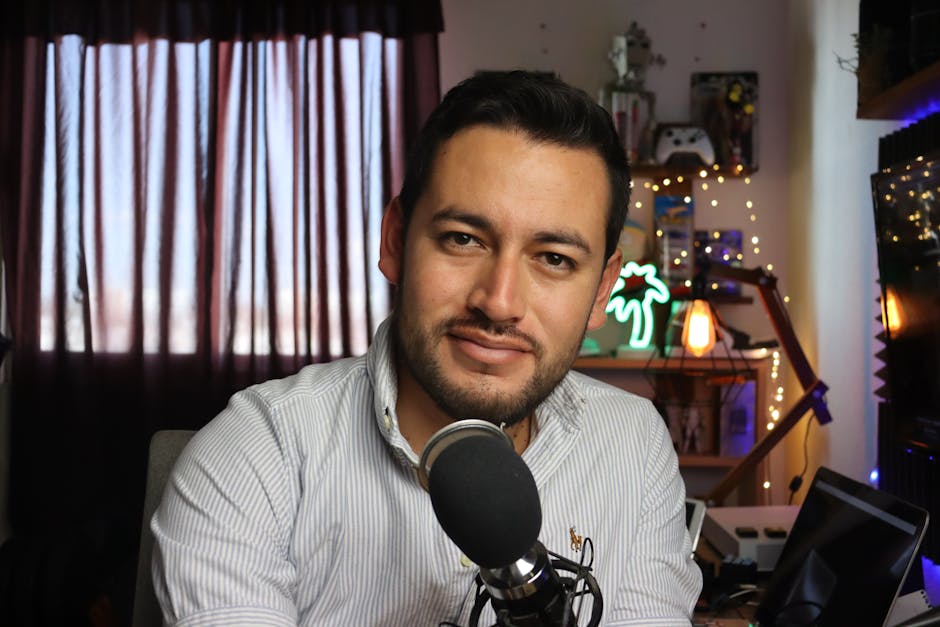How I Convert Podcast Listeners Into Email Subscribers.
How I Convert Podcast Listeners Into Email Subscribers
For any podcaster, building an engaged audience is paramount. But what happens after they hit ‘play’? The truth is, a listener is just that – a listener. They tune in, they enjoy, and then they often move on. To truly build a sustainable community and a direct line of communication, converting those dedicated ears into email subscribers is not just a nice-to-have; it’s a necessity. Over the years, I’ve refined a system that consistently transforms casual listeners into valuable email contacts, creating a more robust foundation for my content and business. This isn’t about generic advice; it’s about the specific, actionable strategies I personally employ to make this conversion happen, turning passive consumption into active engagement and a thriving community.
Crafting Irresistible On-Air Invitations: My First Touchpoint Strategy
My podcast episodes aren’t just about delivering great content; they’re carefully structured to include strategic moments where I invite listeners to take the next step. This isn’t a hard sell; it’s an organic extension of the value I’m already providing. I believe that if someone is enjoying my content, they’ll be receptive to deepening their connection with me. The key is making these invitations feel natural and beneficial to them, enhancing their overall experience with my brand.
Weaving Value-Driven Prompts Into My Narrative
I avoid simply saying, “Subscribe to my email list!” Instead, I integrate my calls-to-action (CTAs) directly into the fabric of the episode. For instance, if I’m discussing a complex topic like “The Nuances of Digital Marketing Funnels,” I might say, “If you found this breakdown of funnels helpful, I’ve created an exclusive cheat sheet with all the key takeaways and actionable steps for building your own. You can grab it right now by visiting [my website address] – the link is also in the show notes.” This positions the email signup as an enhancement to their listening experience, not an interruption. It’s about providing an immediate solution or deeper dive related to the content they’re already consuming.
I find placing these prompts at natural breaks, or when I’m introducing a particularly valuable piece of information, works best. Sometimes it’s after a key insight, other times it’s before transitioning to a new segment. The goal is to make it feel like a bonus, not an obligation. I also make sure to vary my language slightly so it doesn’t sound repetitive across episodes, keeping the invitation fresh and authentic. For example, one week it might be a “step-by-step guide,” the next a “resource list,” always tailored to the specific episode’s content.
The Power of a Single, Clear Call-to-Action I Employ
While I might have multiple resources available on my website, I typically focus on one primary, specific call-to-action per episode when asking for an email signup. Overloading listeners with too many options leads to decision fatigue and fewer conversions. My primary CTA usually directs them to a specific landing page designed for that episode’s lead magnet. I ensure the URL is easy to remember and repeat it clearly and concisely. For example, “Head over to MyWebsite.com/EpisodeTitle to get your free resource.” The simpler I make it for them, the more likely they are to act. This singular focus dramatically improves the conversion rate, as listeners know exactly what to do and where to go. I’ve observed that a single, compelling offer can yield conversion rates up to 5-7% from engaged listeners, whereas multiple, less focused CTAs rarely break 2%.
Strategic Placement and Repetition for Maximum Impact
The placement and frequency of my on-air CTAs are meticulously planned. I typically include a brief mention in the episode’s intro, a more detailed prompt mid-roll (especially if it relates to the current discussion), and a final, clear invitation in the outro. This repetition isn’t annoying if the value proposition is strong and the delivery is natural. A quick mention at the beginning sets the expectation, the mid-roll prompt is timely and relevant, and the outro serves as a final reminder for those who enjoyed the full episode.
For instance, in the intro, I might say, “Stay tuned until the end for a special resource related to today’s topic, available exclusively to our email subscribers.” Then, mid-episode, I dive into the details of the specific lead magnet, explaining its benefits. Finally, in the outro, I provide the direct URL and reiterate the benefit one last time, often adding a sense of urgency or exclusivity. This layered approach ensures that listeners, regardless of when they tune in or how long they listen, have multiple opportunities to convert. It also aligns with strategies to Boost Your Podcast Engagement by offering ongoing value and a clear next step.
Transforming Show Notes into Conversion Hubs: Beyond the Link
While on-air mentions are crucial, the show notes for each episode are equally vital, serving as a persistent, clickable bridge between my audio content and my email list. Many podcasters treat show notes as an afterthought, a quick summary. I view them as a strategic extension of the episode, designed to provide deeper value and guide listeners to my other platforms, especially my email list.
Detailed Summaries with Integrated Value Propositions
My show notes are never just a transcript or a bulleted list. They are rich, keyword-optimized summaries that elaborate on key points, define jargon, and provide additional context. Within these summaries, I strategically embed text links and clear call-to-action buttons that lead directly to the specific lead magnet mentioned in the episode. For example, if I discussed “SEO for Podcasters,” the show notes would recap the main points and then prominently feature a link like: “Download the FREE ‘Podcast SEO Checklist’ here!” This ensures that even if a listener missed the on-air CTA or wants to revisit it later, the option is readily available and visually appealing.
I also include a dedicated section at the very top and bottom of the show notes specifically for my main lead magnet, making it unmissable. This includes a compelling description of what the subscriber will gain, reinforcing the value proposition.
Dedicated Landing Pages for Each Lead Magnet
Instead of sending listeners to a generic signup page, every lead magnet I create has its own dedicated, optimized landing page. This page reiterates the benefits of the specific resource, provides a clear signup form, and minimizes distractions. By using unique URLs like MyWebsite.com/episodename-resource, I can easily track which episodes are driving the most email signups through




Post Comment